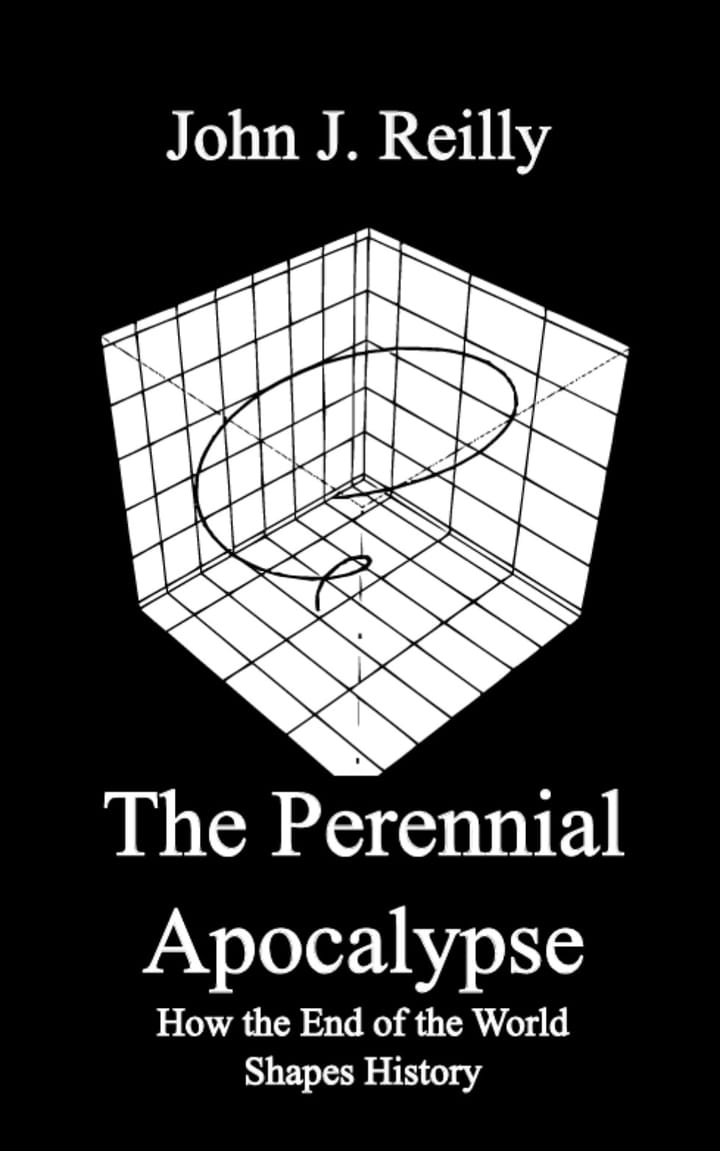The Long View: Snapscript
This is John Reilly's more mature attempt at new English orthography, based on his earlier Altscript.
Contents
Everyday Snapscript
No one expects people who have been educated using an established spelling system to switch to a new one all at once. When European languages reform their spellings, adults usually just adopt the new spellings that they find most convenient. This list of 100 Snapscript words illustrates the kind of changes that ordinary people might be expected to adopt in the short term if a general spelling reform were ever instituted for English. These words have been chosen because almost all of them are shorter than their traditional English equivalents. (They also illustrate how the system works, without the need to plow through the rules given below.)
You may have seen many of these forms before, particularly on Usenet. They are usually dismissed as misspellings or mere abbreviations. The reality is that, by any measure, they are better than the standard spellings.
actr
analyz
anml
ansr
apl
axept
axesabl
batl
blu
(verb & adjective)
buety
betr
blok
bo
(made from ribbons)
botl
byt
(applies to dogs & nerds)
capitl
(money, cities and buildings)
capsion
caus
(goes with "effect")
caut
chairmn
comn
cood
(rhymes with "wood")
cru
(shipside employees)
custm
dautr
defye
eatn
exept
exlnt
factr
fantm
fasion
filosofy
frend
frst
fyl
fyt
gest
giv
goast
hav
hevn
hidn
horrabl
houss
hrd
(group of animals and what you just did with your ears)
hu
(the guy on first)
hyt
imaj
jermn
jentl
juj
(comes in the hanging variety)
letr
lisn
litl
lyf
mountn
my
mynd
nollaj
marraj
ofisial
ofiss
oftn
pasion
pedl
(found on bikes; to sell stuff)
pedlr
(guy who sells stuff)
pensl
posabl
prezent
(verb)
preznt
(as in "gift" and "here")
rais
(something that is supposed to happen to your salary)
record
(verb)
recrd
[noun)
ritn
ryt
(the opposite of left; a ceremony; the present of "roat")
scriptuer
sertn
servr
sevn
shu
(something you put on your feet;
what you do to flies)
shood
(rhymes with "cood")
sistm
speek
stopd
styl
sudn
sycl
syn
syt
(covers vision, references and places)
tacl
tho
trubl
tu
(covers "to" "too" "two")
vue
waitr
wethr
wimn
wumn
wynd
(a clock)
Snapscript Introduction
This reform proposal has few original elements. Most of the forms and devices can also be found in Cut Spelling and Fonetic (see the Spelling Reform page). Snapscript tries to represent the pronunciation of the major forms of English speech consistently, while maintaining the look of the orthography English has been using since the 1750s. Snapscript does this with three mechanisms:
(1) Positional Spelling. Spelling can be consistent, even if letters sometimes have different values. The trick is that the values of the letters must vary predictably according to where the letters appear in words. Thus, for instance, the words "each," "sheet" and "pity" all represent the long "e" in different ways, but these forms are not arbitrary: they depend on whether the sound occurs initially, medially or finally.
(2) Consonant Sounding. The consonants "l" "m" "n" "r" (and sometimes "d" and "s") can often be treated as whole syllables. This is one way to represent the obscure vowel in English, called the "schwa," which is now represented almost at random. Thus, words like "actor," "simple" and "heard" become "actr," "simpl," "hrd." As the last example illustrates, consonant sounding permits traditional spellings to be rationalized by merely omitting letters, rather than changing them.
(3) Broad Transcription. English is less divided into radically different dialects than are most major languages, but there are still notable differences among the ways even educated people speak in different parts of the English-speaking word. Snapscript, like the spelling systems of other languages, tries to do no more than to indicate a pronunciation that should be recognizable anywhere. The fact that the traditional spelling of English fails to do this is why it needs reform.
In this explanation, the abbreviation TO stands for "Traditional Orthography," the conventional spelling of English.
The Rules
The Form Groups are arranged in a hierarchy from most specific to most general. When doing transcriptions, use the first Form that solves the problem.
* * *
Group I: Special Forms
Syllables: --ABL [TO "palatable" > "palatabl"] || --AJ as in [TO "marriage" > Snapscript "marraj"] || ANTI-- || COM-- || CON-- || EX-- || --IC (oblique ICS) || --IT is as in [TO "definite," "proximate" > Snapscript "definit," "proximit"] || PRE-- is as in "prevent" or "precook" || PRO-- is as in "prom" or "program" || RE-- is as in "retail" or "regain" || --SIAL is as in [TO "partial" > Snapscript "parsial"] || --SIUS is as [TO "cautious" > Snapscript "causius"] || --SION is as in [TO "caption" > Snapscript "capsion"] || --SUER is as in [TO "pressure" > Snapscript "presuer"] || UN-- is as in [TO "unnerve" > Snapscript "unnerv"] || --ZION-- is as in [TO "persuasion" > Snapscript "perswaizion"] || --ZUER-- is as in [TO "pleasure" > Snapscript "plezuer"]
Combinations: AL is as in "pal." || ALL is as in "all." || AR is as in "ark." || ARR is as in "harry." || ERR as in "ferry" || ING is as in both "singer" and "finger." || OL is as in "hold." || OLL is as in "jolly." || OR is as in "or" || ORR is as in "sorry" || UL is as in [TO "hull" > Snapscript "hul"] || ULL is as in "full" || -YZ is terminal for stems. [TO "size" "analyze" > Snapscript "syz" "analyz"].
Oblique Endings: The simple past ending is --D, pronounced /d/ or /t/, depending on whether the preceding sound is voiced or unvoiced. After D or T, oblique --D is a syllable [TO "credited" > Snapscript "creditd"]. The plural, the possessive and third-person singular ending is --S. After CH, J, S, SH, X, Z or ZH, --S is a syllable [TO "boxes" Snapscript "boxs"]. After --SS, --S becomes --ES ["express" > "expresses."]
Endings, Compounds & Stems: Grammatical endings and common added syllables do not affect the stems of words ending in consonants or in A or AY; other stems ending in vowels change to accord with the Forms set out below. Compounding words does not change either final consonants or vowels.
Group II: Initial Vowels
AI is as in "aim." || AO is as in "aorta" || AU is as in "auto" || EA as in "each" || EO is as in "eon" || IA is as in "Ian" || IE is as in [TO "ice" > Snapscript "iess"|| OA is as in "oat" || OI is as in "oil." || OU is as in "our" || UO is as in [TO "oops" > Snapscript "uops"] || UE is as in [TO "use" > Snapscript "ues"] || YIE is as in [TO "yikes" > Snapscript "yieks"].
A, E, I, O, U have their traditional short values when used alone: A as in "ant," E as in "elk," I as in "it," O as in [TO "odd" > Snapscript "od"], U as in "up." U is the schwa in this position [TO "utter," "other" > Snapscript "utr," "uthr"].
Group III: Medial Vowels
Sounded Consonants: L, M, N, R can be unstressed syllables that begin with the schwa [TO "bottle" >Snapscript "botl"]. These consonants are "sounded" whenever they are not initial, doubled, or preceded or followed by another vowel. When M or N follows R or L, only the R or L can be sounded. [TO "firm" > Snapscript "frm"]. When L follows R, only the R can be sounded [TO "girl" > Snapscript "grl"]. When M follows N or vice versa, only the second letter can be sounded [TO "commandment" > Snapscript "comandmnt"].
A, E, O, U, AI, AO, AU, EO, OA, OU, UE, UO are the same as when used initially || EA is as in "reality" || EE is as in "meeting" || EI is as in "being" || I by itself is as in "bit." It is otherwise a glide, as in [TO "canyon" > Snapscript "canien" || OE is as in "poet" || OI is as in both "join" and "going." || OO is as in "good" || UA is as in "actual" || UI is as in "ruin" and "genuine" || UOE is as in [TO "influential" > Snapscript "influoensial"] || UU is as in [TO "ambiguous" > Snapscript "ambiguuss"] || Y is as in [TO "style" > Snapscript "styl"]
In all other medial situations, the schwa is E.
Group IV: Final Vowels
A is the schwa as in "rumba" || AW is as in "jaw" || AY is as in "display" || O is as in "so." || OW is as in "endow." || OY is as in "enjoy." || U is as in "flu" || UE is as in "continue."
Final AW, AY, OW and OY are not altered by grammatical endings, the addition of syllables or by compounding ["enjoys," "enjoyment"].
---------Monosyllables Only: Y is as in "fly" || E is as in "be." .
-------- Polysyllables Only: Y is as in "shifty." || YE is as in [TO "signify" > Snapscript "signifye"].
Group V: General Consonants
Clusters: CH is as in "chug" || SH is as in "she" || SS is used only finally, to indicate an unambiguous /s/ || TH is as in "the." || TTH is as in "thin" || WH is as in "when" || ZH is as in [TO "beige" > Snapscript "baizh"].
Single Consonants: bdfghjlmnpqrtvwxz have their familiar values, as in the Snapscript sentence. "The quik, broun foxs jump oavr the laizy cats and yelping dogs."
Note that:
--C is hard, as in "cat." It is used for that sound initially and medially. K is used (1) at the end of words and (2) before I, E, or Y.
--Single S when final is pronounced /z/ or /s/, depending on whether the preceding sound is voiced or unvoiced. (This simply generalizes the TO rule for plurals and possessives.)
--Y is a consonant when used initially.
The author, John J. Reilly, relinquishes all rights to the material on this page. Originally posted July 10, 1999.



Comments ()